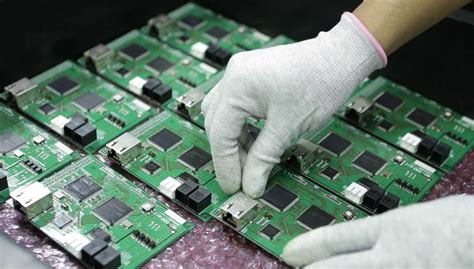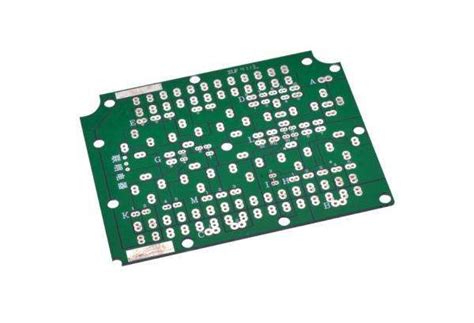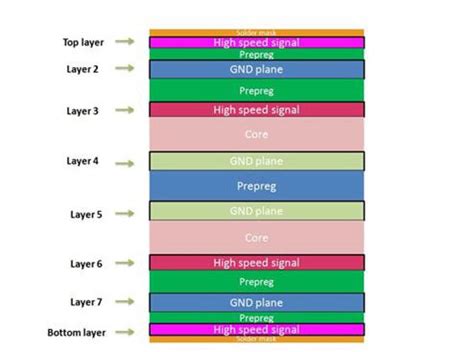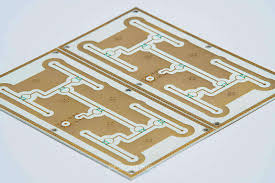Current carrying capacity of PCB traces and vias
Since the current of different products and modules is different, in order to realize various functions, designers need to know whether the designed routing and vias can carry the corresponding current to realize the function of the product and prevent the product from burning when overcurrent occurs.
This article introduces the scheme and test results of designing and testing the current carrying capacity of routing and vias on FR4 copper clad boards. The test results can provide designers with a certain reference in future designs, making PCB design more reasonable and more in line with current requirements.
1.Introduction
At present, the main material of printed circuit boards (PCBs) is FR4 copper clad boards. Copper foil with a copper purity of not less than 99.8% realizes the electrical connection between various components on the plane, and plated through holes (VIA) realize the electrical connection between the copper foils of the same signal in space.
However, we have always designed how to design the width of copper foil and how to define the aperture of VIA based on experience.
In order to make the layout design more reasonable and meet the needs, the current carrying capacity of copper foils with different wire diameters was tested, and the test results were used as a reference for design.

2.Analysis of factors affecting current carrying capacity
The different module functions of the product PCBA have different current sizes, so we need to consider whether the traces that play a bridging role can carry the current passing through. The factors that determine the current carrying capacity are mainly:
Copper foil thickness, trace width, temperature rise, plated through hole aperture. In actual design, it is also necessary to consider the product use environment, PCB manufacturing process, board quality, etc.
2.1 Copper foil thickness
In the early stage of product development, the copper foil thickness of the PCB is defined according to the product cost and the current state of the product.
Generally, for products without high current, you can choose a copper foil with a thickness of about 17.5μm on the surface (inner) layer:
If the product has some large currents and the board size is sufficient, you can choose a copper foil with a thickness of about 35μm on the surface (inner) layer;
If most of the product signals are large currents, you must choose a copper foil with a thickness of about 70μm on the (inner) layer.
For PCBs with more than two layers, if the surface and inner copper foils use the same thickness, the current carrying capacity of the same wire diameter traces is greater on the surface layer than on the inner layer.
Take the example of PCB with 35μm copper foil on both inner and outer layers: after the inner layer circuit is etched, it is laminated, so the thickness of the inner copper foil is 35μm.
After the outer layer circuit is etched, it needs to be drilled. Since the hole does not have electrical connection performance after drilling, chemical copper plating is required. This process is full-board copper plating, so the surface copper foil will be plated with a certain thickness of copper, generally about 25μm~35μm, so the actual thickness of the outer copper foil is about 52.5μm~70μm.
The ability of copper clad board suppliers is different, and the uniformity of copper foil will be different, but the difference is not large, so the impact on current carrying can be ignored.
2.2 Track width After the copper foil thickness of the product is selected, the track width becomes the decisive factor in the current carrying capacity.
There is a certain deviation between the design value of the track width and the actual value after etching, and the general allowable deviation is 10μm/-60μm. Since the track is etched, there will be residual solution at the corner of the track, so the corner of the track will generally become the weakest place.
Thus, when calculating the current carrying value of the corner trace, the current carrying value measured on the straight trace should be multiplied by (W-0.06)/W (W is the trace width, in mm).
2.3 Temperature rise When a continuous current passes through the trace of the PCB, the trace will heat up, causing a continuous temperature rise.
When the temperature rises to the TG temperature of the substrate or higher than the TG temperature, it may cause deformation such as warping and bubbling of the substrate, thereby affecting the bonding force between the trace copper foil and the substrate, and the trace warping and deformation will cause the breakage.
When a transient large current passes through the trace of the PCB, the weakest part of the copper foil trace will not be able to transfer heat to the environment in a short time, which is similar to an adiabatic system. The temperature rises sharply and reaches the melting point of copper, burning the copper wire.
2.4 Plated through hole aperture
The plated through hole realizes the electrical connection between different layers by electroplating copper on the wall of the through hole. Since the whole board is copper-plated, the copper thickness of the hole wall is the same for the plated through holes of each aperture. The current carrying capacity of plated through holes of different apertures depends on the circumference of the copper wall.

3.Test PCB design
At present, the substrates with TG temperatures of >135℃ and >150℃ are used. Considering the requirements of ROHS for lead-free, PCB will gradually switch to lead-free, so the substrate with TG temperature >150℃ must be selected. Therefore, Shengyi S1000 is selected as the substrate for the test board this time.
The size of the test board PCB is 164mm wide and 273.3mm long. The PCB is made by Shenzhen Mutailai Technology Co., Ltd. The test board PCB is divided into three groups.
3.1 The first group:
The outer copper foil is 17.5μm, and the inner copper foil is 35μm. The first group of test board PCBs uses an outer layer of 17.5μm base copper and an inner layer of 35μm base copper.
The outer wire diameters are: 0.125mm0.16mm,
0.2mm, 0.25mm, 0.3mm, 0.4mm, 0.5mm, 0.6mm, 0.7mm, 0.8 mm, 0.9mm, 1.0mm, 1.2mm, 1.5mm, 2.0mm, 2.4mm, 2.8mm, 3.0mm, 3.5mm, 4.0mm, 4.5mm, 5.0mm, 5.5mm, 6.0mm, 6.5mm, 7.0mm, 7.5mm, 8.0mm.
Two samples for each wire diameter.
The inner wire diameters are: 0.125mm, 0.16mm, 0.2mm, 0.25mm, 0.3mm, 0.4mm, 0.5mm, 0.6mm, 0.7mm, 0.8 mm, 0.9mm, 1.0mm, 1.2mm, 1.5mm, 2.0mm, 2.4mm, 2.8mm, 3.0mm, 3.5mm, 4.0mm, 4.5mm, 5.0mm, 5.5mm, 6.0mm, 6.5mm, 7.0mm, 7.5mm, 8.0mm.
Two samples for each wire diameter.
The plated through hole diameters are: 0.15mm, 0.25mm, 0.3mm, 0.5mm, 0.7mm.
Two samples for each hole diameter.
3.2 The second group:
outer copper foil 35μm, inner copper foil 70μm The second group of test boards PCB uses an outer layer of 35μm base copper and an inner layer of 70μm base copper.
The outer wire diameters are: 0.125mm, 0.16mm, 0.2mm, 0.25mm, 0.3mm, 0.4mm, 0.5mm, 0.6mm, 0.7mm, 0.8 mm, 0.9mm, 1.0mm, 1.2mm, 1.5mm, 2.0mm, 2.4mm, 2.8mm, 3.0mm, 3.5mm, 4.0mm, 4.5mm, 5.0mm, 5.5mm, 6.0mm, 6.5mm, 7.0mm, 7.5mm, 8.0mm.
Two samples for each wire diameter.
Since the existing supplier’s capacity for the copper foil thickness of 70μm is 0.2mm for the minimum inner wire diameter, the inner wire diameters are: 0.2mm, 0.25mm, 0.3mm, 0.4mm, 0.5mm, 0.6mm, 0.7mm, 0.8 mm, 0.9mm, 1.0mm, 1.2mm, 1.5mm, 2.0mm, 2.4mm, 2.8mm, 3.0mm, 3.5mm, 4.0mm, 4.5mm, 5.0mm, 5.5mm, 6.0mm, 6.5mm, 7.0mm, 7.5mm, 8.0mm.
Two samples for each wire diameter.
The plated through hole diameters are: 0.15mm, 0.25mm, 0.3mm, 0.5mm, 0.7mm.
Two samples for each hole diameter.
3.3 The third group:
Outer copper foil 70μm, inner copper foil 105μm The third group of test boards PCB uses an outer layer of 70μm base copper and an inner layer of 105μm base copper.
Since the existing supplier’s capacity for the copper foil thickness of 70μm is a minimum outer layer wire diameter of 0.3mm, the outer layer wire diameters are: 0.3mm, 0.4mm, 0.5mm, 0.6mm, 0.7mm, 0.8 mm, 0.9mm, 1.0mm, 1.2mm, 1.5mm, 2.0mm, 2.4mm, 2.8mm, 3.0mm, 3.5mm, 4.0mm, 4.5mm, 5.0mm, 5.5mm, 6.0mm, 6.5mm, 7.0mm, 7.5mm, 8.0mm.
Two samples for each wire diameter.
Since the existing supplier’s capacity for the copper foil thickness of 105μm is 0.3mm for the minimum inner layer wire diameter, the inner layer wire diameters are: 0.3mm, 0.4mm, 0.5mm, 0.6mm, 0.7mm, 0.8 mm, 0.9mm, 1.0mm, 1.2mm, 1.5mm, 2.0mm, 2.4mm, 2.8mm, 3.0mm, 3.5mm, 4.0mm, 4.5mm, 5.0mm, 5.5mm, 6.0mm, 6.5mm, 7.0mm, 7.5mm, 8.0mm.
Two samples for each wire diameter.
The plated through hole diameters are: 0.15mm, 0.25mm, 0.3mm, 0.5mm, 0.7mm.
Two samples for each hole diameter.
4.Test plan
According to the 2.5.4 multi-layer circuit board current resistance section of IPC-TM-650 TEST METHODS MANUAL, the test plan is designed as follows.
At room temperature, for the test of inner and outer layer traces: stick the temperature sensor to the middle of the copper foil trace to be tested, apply current to both ends of the copper foil trace to be tested, and keep it for 3 minutes after the temperature rise ΔT stabilizes, and record ΔT. Gradually increase the current until the copper foil trace is destroyed.
At room temperature, for the test of plated through holes: stick the temperature sensor to the VIA, apply current to both ends of the VIA lead trace to be tested, and keep it for 3 minutes after the temperature rise ΔT stabilizes, and record ΔT. Gradually increase the current until the VIA is destroyed.
T
he current value range is 0~100A. Sampling values: 0.1A, 0.2A, 0.3A, 0.4A, 0.5A, 0.6A, 0.7A, 0.8A, 0.9A, 1A, 1.2A, 1.5A, 1.8A, 2A, 2.3A, 2.5A, 2.7A, 3A, 4A, 5A, 6A, 7A, 8A, 9A, 10A, 15A, 20A, 25A, 30A, 35A, 40A, 45A, 50A, 55A, 60A, 65A, 70A, 75A, 80A, 85A, 90A, 95A, 100A.
5.Test result analysis
Here, only the first set of test data results are analyzed.
5.1 Test result analysis of wire diameter Taking the outer copper foil of 2.8mm wire diameter as an example, the measurement data is shown in Table 1.
According to the measured data in Table 1, a trend chart can be made, as shown in Figure 1:
Figure 1 Trend chart of temperature rise and current of 2.8mm outer copper foil wire diameter
After taking the average value based on the measured values, we can get that 2.8mm outer copper foil routing can carry about 8A current when the temperature rise is ΔT=20℃; about 10.8A current when the temperature rise is ΔT=40℃; about 13A current when the temperature rise is ΔT=60℃; about 16A current when the temperature rise is ΔT=100℃; the limit continuous current is about 20A.
According to the above method, we can get the current carrying capacity of different wire diameters of 17.5μm outer copper foil and the current carrying capacity of different wire diameters of 35μm inner copper foil.
5.2 Analysis of test results of plated through holes
Since the temperature measurement of plated through holes cannot be achieved on the copper layer of the hole wall, we actually measured the temperature of the plated through hole pad surface, so the following test data is for reference only.
Figure 2 Trend of temperature rise and current of VIA with 0.15mm aperture 0.15mm aperture plated through hole measurement value
Graphs of plated through hole measurement values of 0.25mm, 0.3mm, 0.5mm, and 0.7mm apertures are omitted here. After summarizing, Table 2 can be obtained.
Table 2 Current carrying capacity data of different apertures on PCB with 17.5μm outer layer/35μm inner layer copper foil
6.Summary
Through this experiment and analysis of experimental data, we have a more intuitive understanding of the current carrying capacity of traces and holes on copper-clad PCBs.
However, on the one hand, since the test board is not made by a batch supplier, the different production processes affect the different trace widths and the thickness and circumference of the plated through hole arm; on the other hand, the heat dissipation state of each sample during the experiment is somewhat different.
In addition, the design of the test board and the design of the experimental plan are ideal, and the different installation positions of the actual products, the different distribution of components on the products, the density of wiring, and the different substrates used are all impossible for the test board to simulate, so the analysis data cannot directly guide the design.
However, we can refer to the data of this experiment in future development and design. At the same time, we can also correct the experimental data by designing the situation and practical verification in future products, so as to guide the design more accurately.







